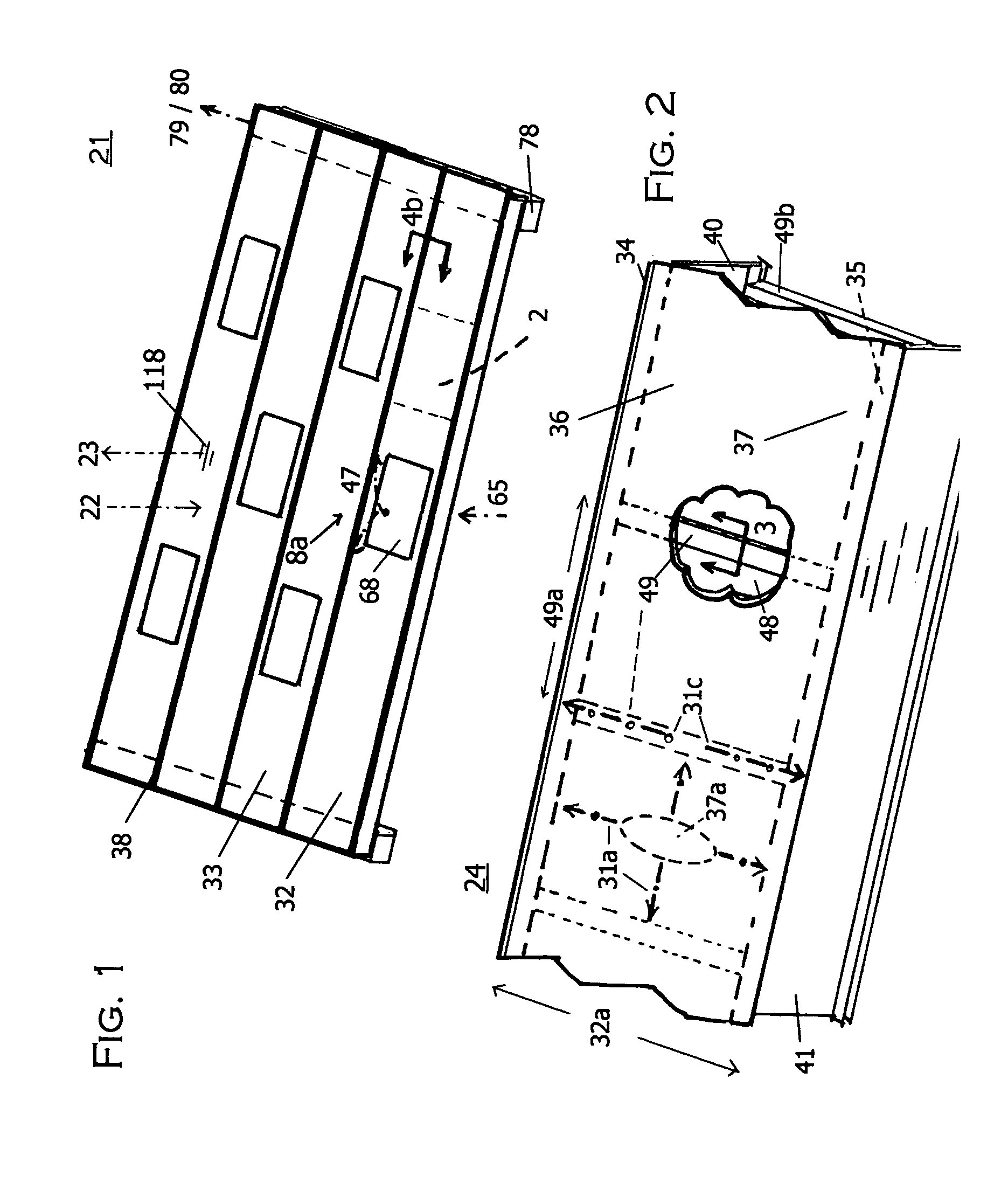Integrated solar, daylight and night cooling system
a solar and daylighting cooling system technology, applied in solar thermal energy generation, solar heating energy, vertical ducts, etc., can solve the problems of not being able to afford a significant improvement in air conditioning load over artificial lighting, not often used in daylighting curbs in the prior art for slopes, and not providing for air movement between two parallel glazing components. to achieve the effect of augmenting the performance of a nearby hvac system and adding to building costs
- Summary
- Abstract
- Description
- Claims
- Application Information
AI Technical Summary
Problems solved by technology
Method used
Image
Examples
Embodiment Construction
[0037]1. FIGS. 1 through 7 show the structure and function of a thermal plane 24 at the exterior of a panel array 21 that can transmit heat to and from a conduit assembly 30 for the purpose of reducing the heating and cooling demands of a building.
[0038]2. FIGS. 6a through 9b show the structure and function of an integral daylighting section 68 in: 1) Cutting the infrared (IR) heat content of solar insolation 22 before it enters a building, 2) Removing heat arising from artificial lighting and equipment within the building during peak electrical and air conditioning periods, 3) Drastically reducing the artificial lighting demand of a building during peak summer usage periods, 4) Utilizing the night cooling capabilities of thermal plane 24 to provide off-peak cooling of a building, and 5) Providing for enhanced fire and violent storm resistance.
[0039]3. FIG. 1 shows a panel array 21 utilizing the invention where specific panels 32 and 33 are tied structurally to frame components (FIG...
PUM
 Login to View More
Login to View More Abstract
Description
Claims
Application Information
 Login to View More
Login to View More - R&D
- Intellectual Property
- Life Sciences
- Materials
- Tech Scout
- Unparalleled Data Quality
- Higher Quality Content
- 60% Fewer Hallucinations
Browse by: Latest US Patents, China's latest patents, Technical Efficacy Thesaurus, Application Domain, Technology Topic, Popular Technical Reports.
© 2025 PatSnap. All rights reserved.Legal|Privacy policy|Modern Slavery Act Transparency Statement|Sitemap|About US| Contact US: help@patsnap.com



